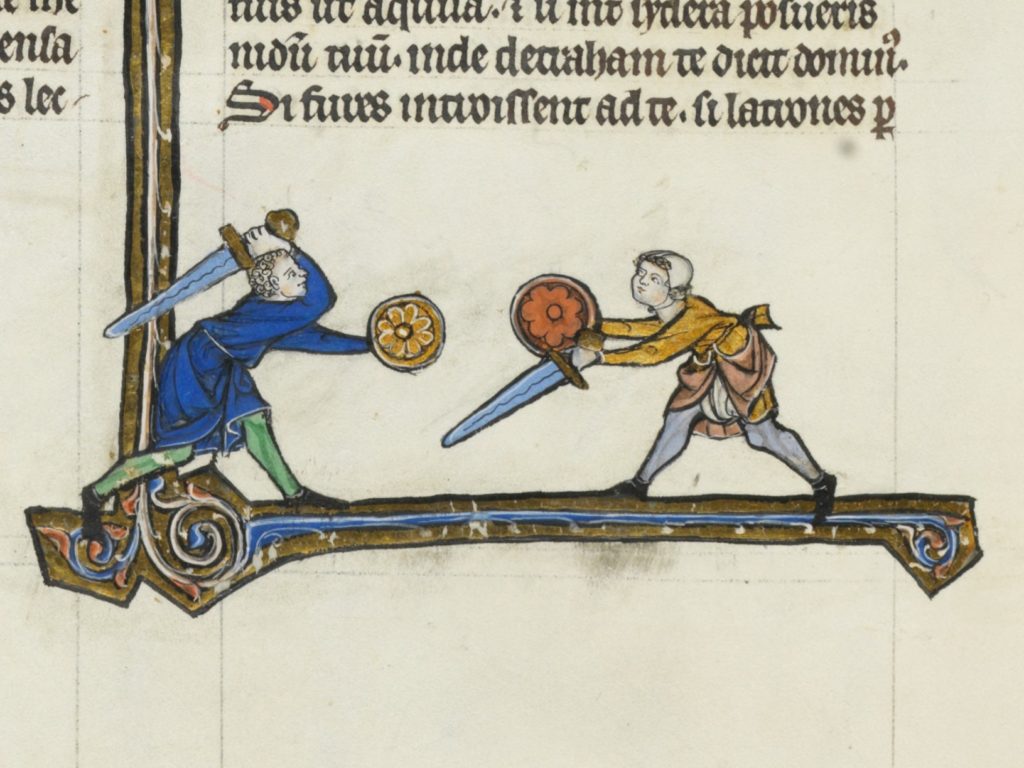Historical Fencing – Or is it simply sword fighting?
Dimicator Schola is a school of historical fencing (or Historical European Martial Arts, HEMA). The lessons are based mainly on the oldest surviving fight book which is now kept in the Royal Armouries in Leeds. It was produced around 1330 in the area of today's Thuringia and Northern Bavaria; first the illustrations and later the texts or glosses. Since it has no known title, we call the manuscript mainly by its former library shelfmark MS [for manuscript] I.33, i.e.
“one-thirty-three”. But what can such a book say about fencing in the Middle Ages, and is “fencing” (which comes from “defending”) even the proper term, especially with regard to modern Olympic fencing?
Historical fencing or HEMA is not a simple synonym for sword fighting. Not only does it include disciplines such as medieval wrestling or dagger fighting, Renaissance or Baroque rapier fencing (as Alexandre Dumas' Three Musketeers might have mastered) or sabre fencing as in Napoleon's time—the main criterion is the approach: HEMAists must interpret texts and illustrations from fight books and similar sources in a virtually scholarly way. How are certain technical terms to be understood? Do the illustrations use ways of representation that are, at first, incomprehensible to a modern viewer? Does a given book describe a certain style of fighting, e.g. is it earnest fighting or does it come from a non-lethal training context?
We complement the data from the fight books by examining historical weapons and other material culture (e.g. clothing and shoes) to draw conclusions about their use. We also strive for using the human body as efficiently (and healthily) as possible to e.g. get a lot of effect from as little muscle effort as possible. Finally, we look at other martial arts and sports as well, because many of their principles are similar or identical. One such principle would be, for instance, that the fight must be controlled as quickly as possible and that the opponent must be deprived of all options of fighting back.
Die Auswertung all dieser Informationen bildet die Grundlage unseres Verständnisses historischer Kampfkünste. Das Fechten, das wir in der Dimicator Schola trainieren, kann also beständig verfeinert und verbessert werden, sobald wir uns neue Erkenntnisse erarbeitet haben.
Die Auswertung all dieser Informationen bildet die Grundlage unseres Verständnisses historischer Kampfkünste. Das Fechten, das wir in der Dimicator Schola trainieren, kann also beständig verfeinert und verbessert werden, sobald wir uns neue Erkenntnisse erarbeitet haben.



